While hand-sewing your leather projects is sometimes the best way to do it, a good sewing machine can make life easier for you, especially if you’re working on a lot of them. So what are the features of the best sewing machine for leather?
It should easily sew through at least ten layers of canvas and must be very simple to set up. An automatic needle threader, thread cutter, and autopilot speed controls are also helpful to finish leather sewing projects more easily.
- Sailrite LSZ-1 Sewing Machine
- Reliable 700SB Sewing Machine
- SINGER 191D-30 Sewing Machine
- Janome HD3000 Heavy Duty Sewing Machine
- Shark by Euro-Pro Sewing Machine 998A
- TippmannLeather Sewing Machine
- Tacsew GC6-6 Industrial Upholstery Sewing Machine
- TechSew 0302 Leather Industrial Sewing Machine
- TechSew 611 Portable Sewing Machine
- Juki DNU-1541S Industrial Sewing Machine
Sewing Machine For Leather Reviews
Sailrite LSZ-1 Sewing Machine
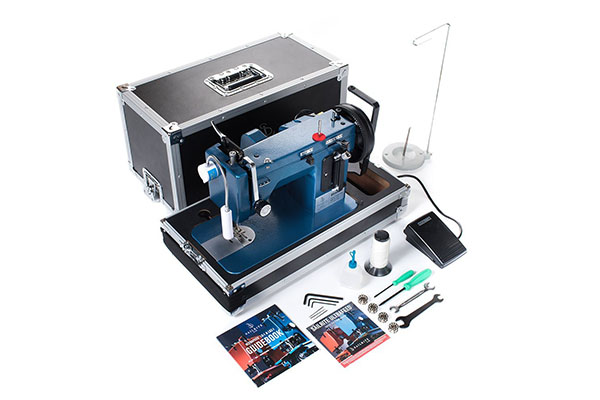
Manufactured by Sailrite, this sewing machine can sew through heavy fabrics. It has the Power Plus Balanced Wheel feature for twice the size and power of the traditional flywheel.
>>>> Click Here To See Customer Reviews & Current Price <<<<
Reliable 700SB Sewing Machine
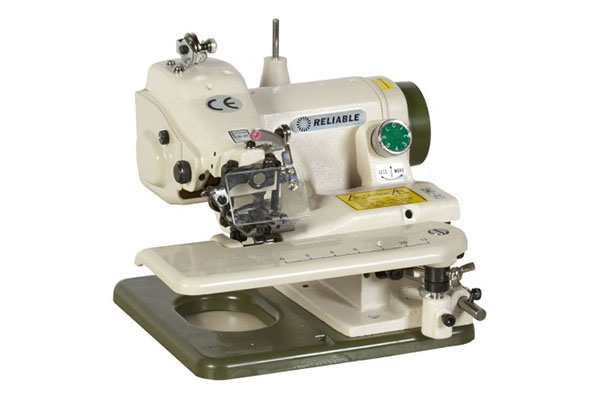
Reliable developed this portable sewing machine with a true skip-stitch 1:1 to 2:1 function. It sews at max speed of 1725rpm, with adjustable stitch penetration for different fabric types.
>>>> Click Here To See Customer Reviews & Current Price <<<<
SINGER 191D-30 Sewing Machine
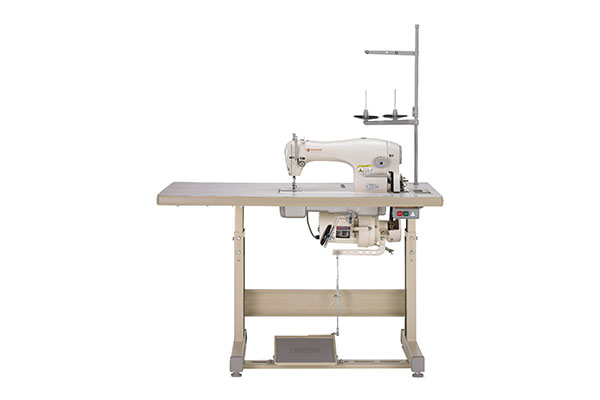
This is a commercial-grade sewing machine developed by Singer. It sews 6x faster than traditional domestic sewing machines, at 4,000 stitches/minute. It has a heavy-duty ½-horsepower motor.
>>>> Click Here To See Customer Reviews & Current Price <<<<
Janome HD3000 Heavy Duty Sewing Machine

Janome offers this heavy-duty sewing machine equipped with a jam-proof top-loading bobbin system. It has 18 built-in different stitches and a presser foot with adjustable pressure for various fabric thickness.
>>>> Click Here To See Customer Reviews & Current Price <<<<
Shark by Euro-Pro Sewing Machine 998A
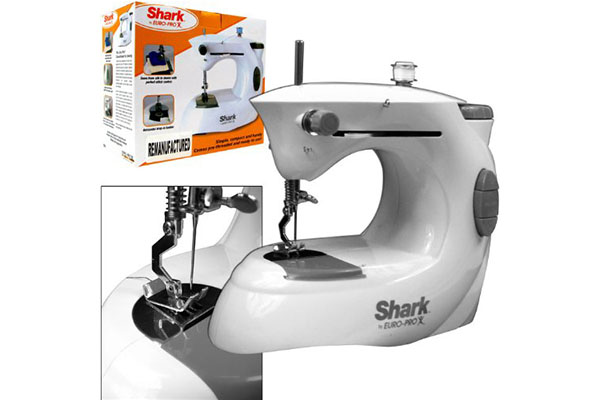
This Euro-ProR Shark series can work with different types of fabrics ranging from silk to multiple denim layers and leather. It has a horizontal drop-in bobbin system.
>>>> Click Here To See Customer Reviews & Current Price <<<<
Tippmann Leather Sewing Machine
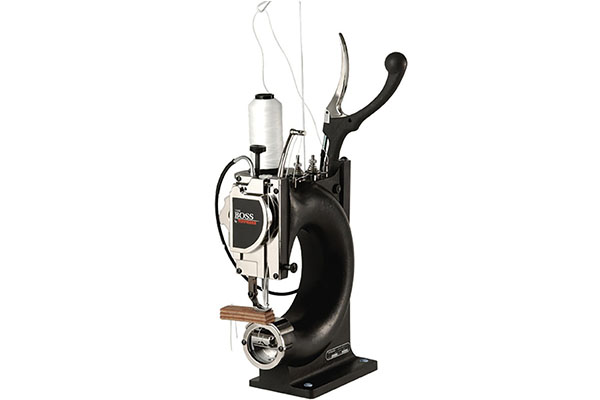
This Tippmann sewing machine can easily sew up to ¾-inch thick leather. It can also sew plastic, urethane, sheepskin, canvass and nylon. It offers adjustable thread sizes, tension, needles, stitch lengths.
>>>> Click Here To See Customer Reviews & Current Price <<<<
Tacsew GC6-6 Industrial Upholstery Sewing Machine
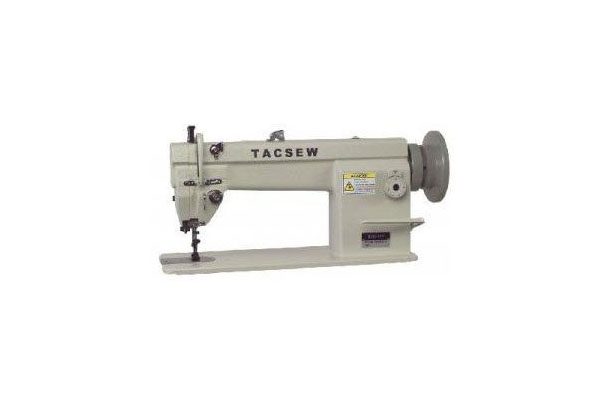
Sew with this industrial-grade sewing machine manufactured by TacSew. It has a large bobbin and reverse for use with different light to heavy fabrics, e.g., leather, canvas and upholstery.
>>>> Click Here To See Customer Reviews & Current Price <<<<
TechSew 0302 Leather Industrial Sewing Machine
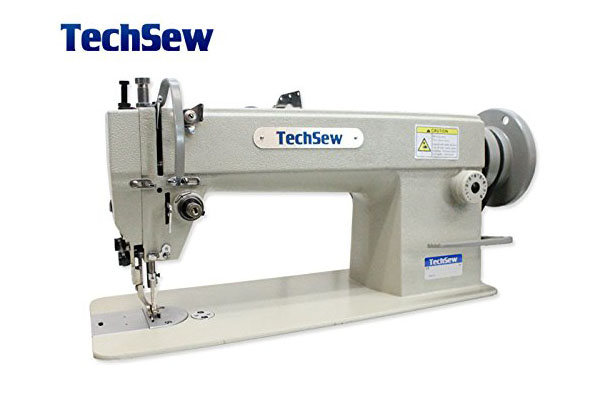
Sew light to heavy materials like vinyl, leather and synthetics with this sewing machine manufactured by TechSew. It features reverse and large bobbin, with 7/16” pressure foot lift.
>>>> Click Here To See Customer Reviews & Current Price <<<<
TechSew 611 Portable Sewing Machine
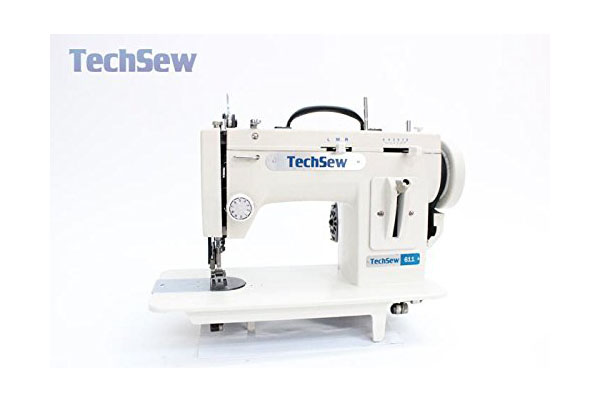
Portable yet heavy-duty function- this is what this TechSew sewing machine is all about. Big power is housed in a small body with its 900rpm motor equipped with gear reduction pulley system.
>>>> Click Here To See Customer Reviews & Current Price <<<<
Juki DNU-1541S Industrial Sewing Machine
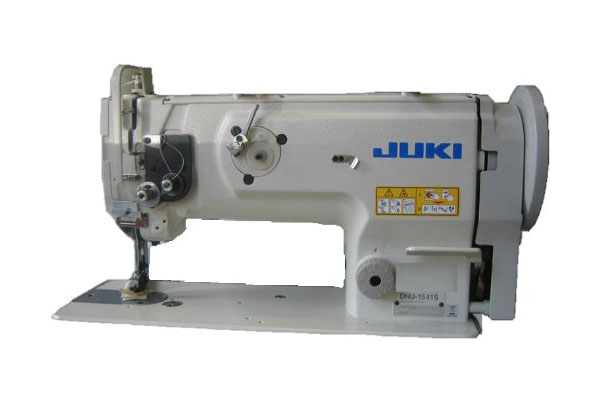
This is a straight-stitch, single-needle industrial sewingmachine manufactured by Juki. Its safety clutch automatically engages in case of sewing problem. This is ideal for heavy-weight fabrics such as leather.
>> Click Here To See Customer Reviews & Current Price <<<<
How to Choose a Sewing Machine for Leather
Because leather is a thicker and tougher material than your usual fabric, you’ll need to use stronger, heavy-duty sewing machines. To be more specific, these are the things you’ll need to consider:
Motor strength – A stronger motor can handle thick material, and will allow the needle to pierce through the leather smoothly without missing any stitches and causing any snagging.
Base material –A metal or aluminum base will not break easily and can handle thicker material like leather, while plastic bases cannot.
Size – Because most heavy-duty sewing machines take up quite a lot of space, you should check if you have room for a medium or large-sized sewing machine.
Additional features –If you want decorative stitches on your leather, there are sewing machines with more stitch styles available. If you want to keep it simple, the only stitches you’ll need are the straight stitch and zigzag stitch.
Weight –Your sewing machine should weigh at least 10 pounds— otherwise, you wouldn’t be able to work properly with all the shaking and bouncing going on.
Types of Sewing Machines for Leather
Different types of sewing machines can handle different types of leather. Here’s an overview of which sewing machine is ideal for which type:
Regular home machine–While these sewing machines are not made to sew leather, they cansew thin, lightweight leather. Thus, this type of sewing machine is recommended only if you plan on working with thinner and bendier leather.
Industrial garmentmachine – Again, these are not designed to sew leather, but they have stronger motors and more power than home sewing machines. These types can handle thinner leathers better than home sewing machines and are great for using thicker threads in sewing leather.
Portable walking foot machine –These machines are smaller but heavy-duty. They are also made to sew thicker material including leather. This is the ideal sewing machine if you want one that can handle leather well and takes up less space.
Industrial walking foot machine –These are the best kind of sewing machine you can get for sewing leather. Though they require a lot of space, these machines have the strongest motors and the best stitch quality. It can sew through leather without damaging it, and overall gives the best results.
To summarize, home and industrial garment machines are good only if you plan on using thinner types of leather, while portable and industrial walking foot machines are the best for all types of leather.
Tips on Using a Sewing Machine for Leather
Keep in mind that you cannot undo stitches. Because the needle will permanently leave a hole in the leather, you don’t want to make any mistakes in sewing. That’s why it’s a good practice to use chalk as a guide.
Do not use pins to keep the leather in place. Again, pins will leave permanent marks on leather, so it’s advised that you use other things instead such as paper clips, binder clips, or even the special clips made specifically for holding leather.
Use a new needle every time you start a new leather project.This is to ensure the best stitching results from your sewing machine.
It’s recommended that you use needles specifically made for leather.It will penetrate leather more efficiently and is easier to use than regular thick-sized needles.
Leather doesn’t fray, so you don’t need to add any seam finishes.Still, you can add seam finishes like top stitches purely for aesthetic purposes.
A bit of trial and error is in order.Test your stitches on a piece of scrap leather before starting the project. If it’s your first time working with leather, experiment with matching needles with thread types to see which combination works the best for you.
How to Maintain Your Sewing Machine for Leather
In this simple maintenance routine, all you need are some lint brushes, sewing machine oil, extra needles, and small screwdrivers to open some parts of the machine.
Note that before doing any cleaning, you should remove the needle and unplug your sewing machine if the model you are using is electronic.
It’s also important to check your user’s manual as it may contain precautions and recommended methods in cleaning your sewing machine.
Lint will accumulate inside the bobbin case and feed dogs, so check them regularly and use a lint brush to remove the lint. You may also use a small vacuum or canned air for excess lint and places that are hard to reach.
In the user’s manual you will see whether or not your sewing machine can be lubricated. If it can, only use special sewing machine oil— otherwise it would damage your machine.
Lastly, you should replace the needle before finishing up your maintenance routine. It is also recommended that you replace it every time you start a new project.

Hi, I am Ashley. I am the editor at VerySimpleCraft.com. I enjoy making things and exploring new ideas. I feel blessed to have the opportunity to share my love of crafts with you.
